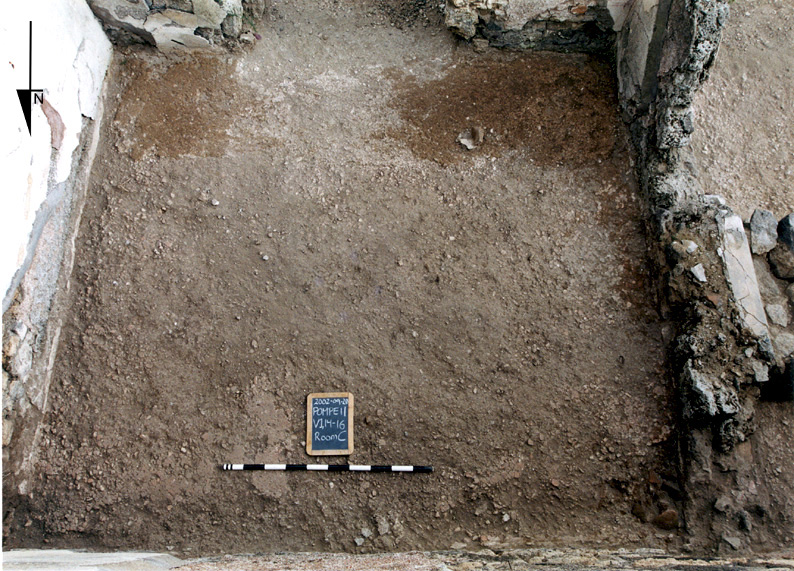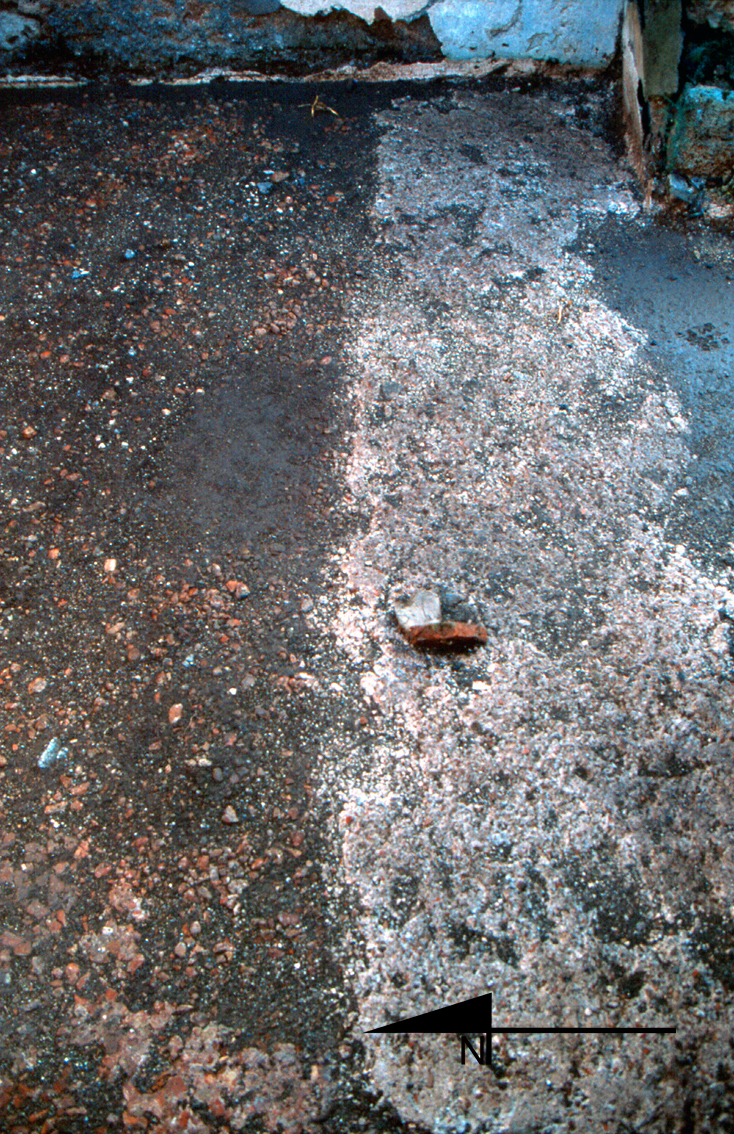Floor
Description
Henrik Boman & Monika Nilsson
The floor is made of cocciopesto with a second coating applied to parts of the floor; red cocciopesto with small white stones makes up the northern 3/4 of the room and a whitish coat covers the cocciopesto floor in the southern quarter of the floor (a band c. 0.8m wide).
The surface of the cocciopesto floor is badly damaged, but the fragmented pieces are still in situ, making up a thick floor layer. Three parts of the floor have a better state of preservation; in the NE corner and along the E wall; in the area of the NW corner and in an area opposite the window in the W wall. The material consists of rather large terracotta pieces with white stones (uncut tesserae?), found especially along the N wall.
The white coating on the floor by the doorway: The southern part of the floor is covered with a white lime-based coating with a clear straight edge in an E-W line, c. 0.8m from the doorway. The straight line may indicate that the limited area reflects the original application, hence we do not presume that the floor was entirely coated with the white paste. Underneath this white coating, the cocciopesto floor of the same kind as in the rest of the room, is found. The plaster on the walls extends below the white paste.
Threshold: No threshold was found in the door opening to the atrium. The floor in the door area was badly damaged and practically completely missing. An imprint in the white coating indicates that a threshold once was installed in the doorway to the atrium. We cannot establish when the threshold was removed, though the lack of any modern repair in the area might indicate that the threshold was removed post-eruption.
We examined the ground in the door opening to a depth of c. 0.1m and found no traces of foundations or support for neither a floor nor a threshold.
Clearing of the floor: Lava gravel and accumulated earth covered the floor in 2002. Under the soil, an empty beer bottle stoodin situ on the cocciopesto floor in the NE corner, demonstrating that the floor was once completely cleared.
Post eruption damage: The fragment of a tile is standing on edge in the floor, in a cutting (?) c. 0.02m deep, with modern mending paste around. The tile seems to be ancient, though its present location might be the result of destructive forces after the excavation.


